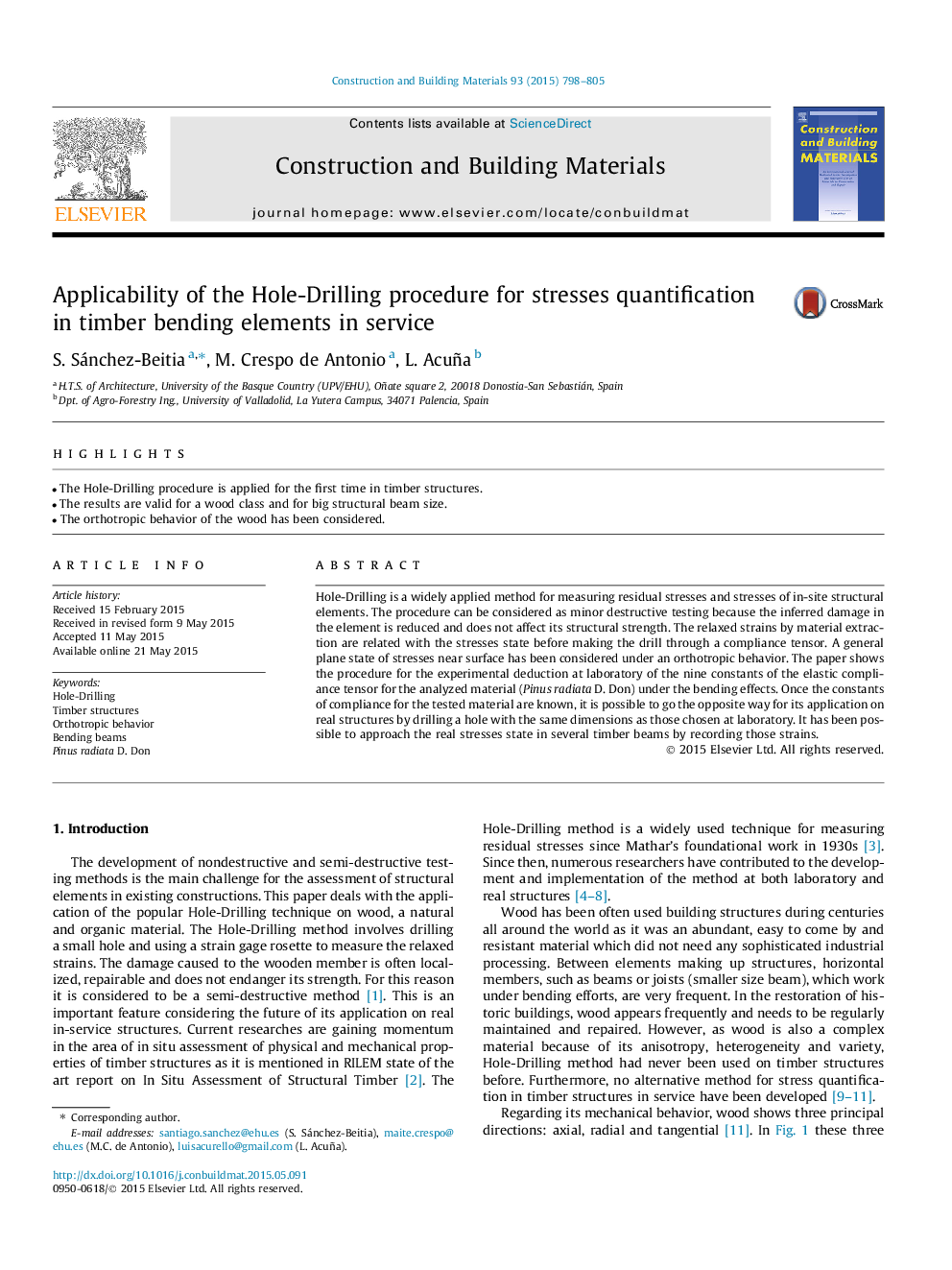| Article ID | Journal | Published Year | Pages | File Type |
|---|---|---|---|---|
| 6720705 | Construction and Building Materials | 2015 | 8 Pages |
Abstract
Hole-Drilling is a widely applied method for measuring residual stresses and stresses of in-site structural elements. The procedure can be considered as minor destructive testing because the inferred damage in the element is reduced and does not affect its structural strength. The relaxed strains by material extraction are related with the stresses state before making the drill through a compliance tensor. A general plane state of stresses near surface has been considered under an orthotropic behavior. The paper shows the procedure for the experimental deduction at laboratory of the nine constants of the elastic compliance tensor for the analyzed material (Pinus radiata D. Don) under the bending effects. Once the constants of compliance for the tested material are known, it is possible to go the opposite way for its application on real structures by drilling a hole with the same dimensions as those chosen at laboratory. It has been possible to approach the real stresses state in several timber beams by recording those strains.
Related Topics
Physical Sciences and Engineering
Engineering
Civil and Structural Engineering
Authors
S. Sánchez-Beitia, M. Crespo de Antonio, L. Acuña,
